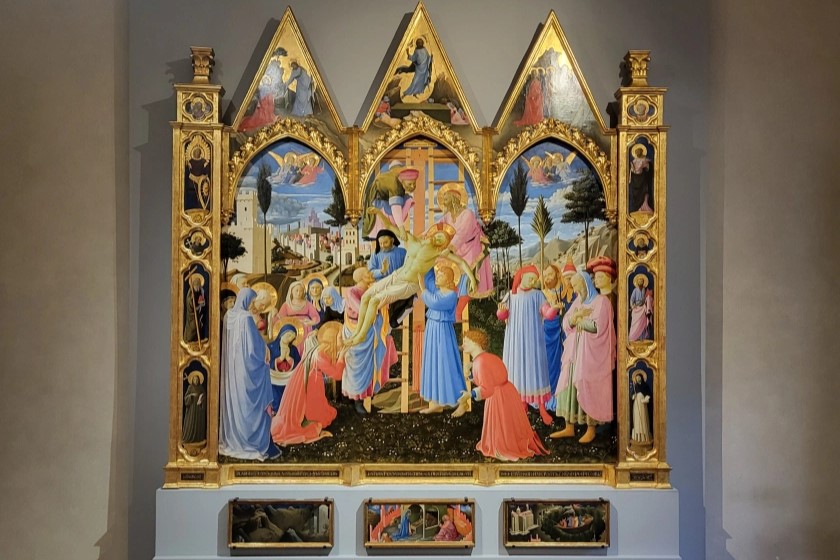The Strozzi Deposition returns to San Marco Museum
Tue, 07/15/2025 - 09:39
After a two-years restoration project, the Strozzi Deposition, a monumental altarpiece by Fra Angelico, has resumed its place at the Museo di San Marco
The Strozzi or Santa Trinita Deposition can be admired again until September 2025. Afterwards, from 26 September 2025 to 25 January 2026, it will be exhibited at Palazzo Strozzi on occasion of the great "Angelico" exhibition, dedicated to the artist seventy years after the first monographic exhibition in 1955. The work was commissioned by the Italian banker and politician Palla Strozzi in memory of his father Onofrio for the sacristy of the church of Santa Trinita.
The Strozzi family initially commissioned Lorenzo Monaco, who painted the three pinnacles and the predella in 1425. Following Lorenzo Monaco’s death, Strozzi entrusted the commission to Fra’ Angelico, who combined both his innovative, contemporary style and the traditional Gothic work of Lorenzo Monaco to produce an altarpiece admirable in its unity.
The triptych scheme, with Saints Nicholas and Onofrio in the main scene, chosen by Lorenzo Monaco, however, did not satisfy Angelico who, with a twist, chose to place a colorful Deposition from the Cross in the centre.
The colors, restored to their original brilliance, are a real feast for the eyes, and vary from blue and green tones to intense crimson. The arches of the frame divide the event participants into three groups. On the left the Pious women spread the shroud in which the body of Jesus will be wrapped; with the Virgin kneeling, hands clasped in prayer, contemplating the body of her Son. At the foot of the Cross, Mary Magdalene, dressed in red and with her hair down, kisses Christ's feet. On the right a group of men, among whom we recognize intellectuals, discussing the symbols of the Passion.
At the center of the scene, the lifeless body of Jesus, among the most beautiful that has ever been painted, with the signs of flagellation on his skin, is placed down from the Cross under the moved gaze of the women by the men of the group. Among these we recognize John the Evangelist, Nicodemus, identified by the golden inscriptions on the edge of the pink dress, and Joseph of Arimathea, on the staircase, top left, who had received permission from Pilate to remove the body of Jesus.
